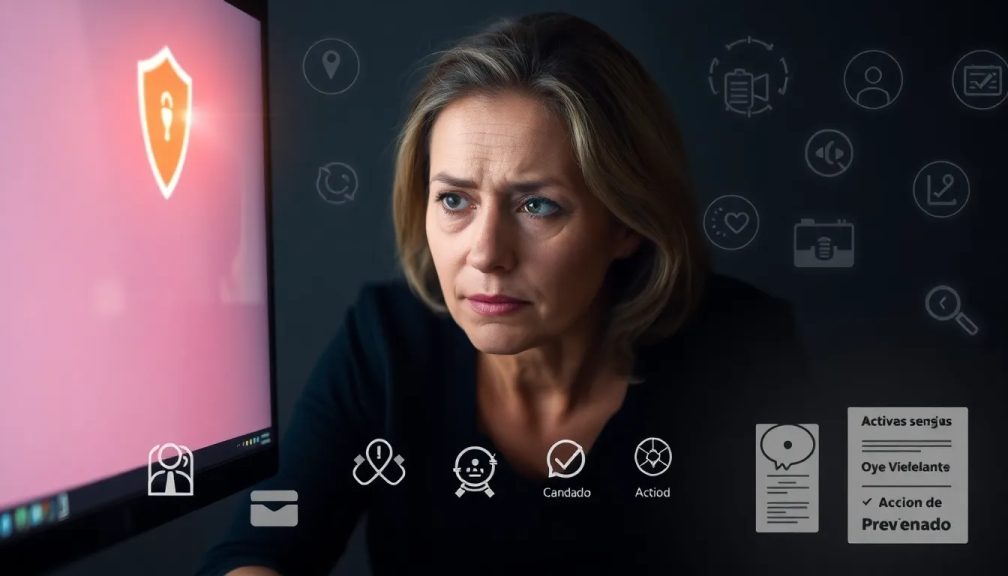Identity theft protection tips for stolen identity situations

Identity theft is more than just a plot device for movies; it’s a stark reality impacting millions around the world. Imagine the anxiety of discovering that someone has been using your personal information to commit fraud, leaving you to pick up the pieces. Understanding identity theft and how to protect yourself is essential in today’s digital society. This article delves into the nature of identity theft, its consequences, and the proactive measures you can take to safeguard your identity.
Understanding identity theft and its mechanisms
At its core, identity theft occurs when someone unlawfully obtains and uses your personal information, such as your Social Security number, bank account details, or credit card information, typically for financial gain. The methods employed by identity thieves are constantly evolving, making it crucial to stay informed about the tactics they use.
Here are some of the most common ways identity theft occurs:
- Phishing: Fraudulent emails, calls, or texts that mimic legitimate organizations to trick you into revealing sensitive information. For instance, you might receive an email that appears to be from your bank, prompting you to verify your account details through a malicious link.
- Data breaches: Cybercriminals infiltrate corporate databases to steal users' personal information. High-profile breaches can expose millions of records simultaneously, making this a significant risk for individuals.
- Social engineering: Manipulative approaches where scammers impersonate trusted individuals (like tech support) to extract sensitive information, such as passwords or PINs.
- Card skimming: Devices installed on ATMs or gas stations that capture your card information when you swipe, allowing thieves to clone your debit or credit cards.
- Dumpster diving: Identity thieves sift through trash to find discarded documents that contain personal information, such as bank statements or bills that haven't been shredded.
As technology advances, new threats emerge, including sophisticated tactics like AI deepfakes that can further complicate identity verification processes. Staying aware of these tactics is your first line of defense against identity theft.
The far-reaching consequences of identity theft
The repercussions of identity theft can be both immediate and enduring, affecting various aspects of a victim's life. Here’s what individuals may face:
- Financial losses: Identity thieves can access your accounts, draining your savings or accruing debt in your name. Victims may find themselves responsible for charges they never authorized.
- Legal implications: If criminals use your identity for illegal activities, you may face legal challenges, including a tarnished reputation. Clearing your name can entail lengthy and costly legal battles.
- Emotional distress: The psychological impact of identity theft can be severe. Victims often experience feelings of violation, anxiety, and fear, which can persist long after the incident.
- Damage to credit score: Unauthorized accounts and debt can significantly harm your credit rating, making it challenging to secure loans, mortgages, or even rental agreements in the future.
The aftermath of identity theft often requires substantial effort and resources to resolve, making prevention and protection paramount.
How NordProtect can shield you from identity theft
Taking proactive measures against identity theft is crucial. NordProtect, an identity theft protection service from the trusted creators of NordVPN, offers tools designed to keep your personal information secure.
Here are some key features that NordProtect provides to help combat identity theft:
- 24/7 dark web monitoring: Continuous scanning of the dark web for your personal information, such as Social Security numbers or email addresses. If a potential leak is detected, you receive instant alerts with actionable steps.
- Credit activity monitoring: Alerts you to significant changes in your credit file, allowing you to respond quickly if unauthorized accounts are opened in your name.
- Real-time cybersecurity alerts: Notifications regarding data breaches or compromised credentials enable you to take immediate action to secure your accounts.
- Cyber insurance: Up to $1 million in coverage to assist with identity theft recovery costs, including legal fees and lost wages, along with guidance from identity restoration case managers.
This comprehensive approach helps you respond swiftly to threats, minimizing exposure and potential damage.
Practical tips for preventing identity theft
While utilizing identity theft protection services is crucial, there are additional steps you can take to safeguard your information:
- Implement strong online security: Create unique passwords for each of your accounts and utilize two-factor authentication whenever possible. Password managers can assist in maintaining security across platforms.
- Regularly monitor accounts: Frequently reviewing your bank statements and credit reports can help you catch any suspicious activity early. Consider freezing your credit to prevent new accounts from being opened in your name without your consent.
- Safeguard personal information: Always shred documents containing sensitive information before disposal, and be cautious about sharing personal details publicly, especially on social media.
- Secure devices: Keep your software, operating systems, and antivirus programs updated. Utilize biometric authentication where feasible, and download apps only from reputable sources.
- Practice safe browsing: Use secure Wi-Fi connections, avoid clicking on dubious links, and be vigilant against phishing scams that impersonate trusted organizations.
- Consider using a VPN: A virtual private network encrypts your internet connection, making it difficult for hackers to access sensitive information such as passwords and financial details.
What to do if you suspect identity theft
If you believe your identity has been compromised, immediate action is necessary. Follow these steps:
- Contact your bank and credit card companies: Report any unauthorized transactions and request to freeze or close accounts.
- File a report with the Federal Trade Commission (FTC): This creates a record of your identity theft and provides you with a recovery plan. You can file your report online at identitytheft.gov.
- Place a fraud alert on your credit reports: This alerts creditors to take extra steps to verify your identity before opening new accounts in your name.
- File a police report: Having a police report helps substantiate your claims to creditors and can be essential for disputing fraudulent charges.
- Keep detailed records: Document all communications with banks, law enforcement, and credit agencies to aid in your recovery process.
Resources for identity theft victims
Victims of identity theft can access various resources to assist in recovery:
- Federal Trade Commission (FTC): Provides guidance and resources for victims, including how to report identity theft and steps for recovery.
- Identity Theft Resource Center: Offers comprehensive support and resources for individuals dealing with the fallout of identity theft.
- Credit reporting agencies: Contact major agencies like Experian, TransUnion, and Equifax for credit freeze options and to obtain free copies of your credit report.
- Legal assistance: If facing legal challenges due to identity theft, consider consulting with a lawyer specializing in consumer protection or identity theft cases.
By understanding identity theft and taking proactive steps, you can significantly reduce your risk and protect your financial health. For more information, check out this informative video:
Awareness and preparation are your best defenses against identity theft. Equip yourself with knowledge and tools to navigate this critical issue safely.



Leave a Reply